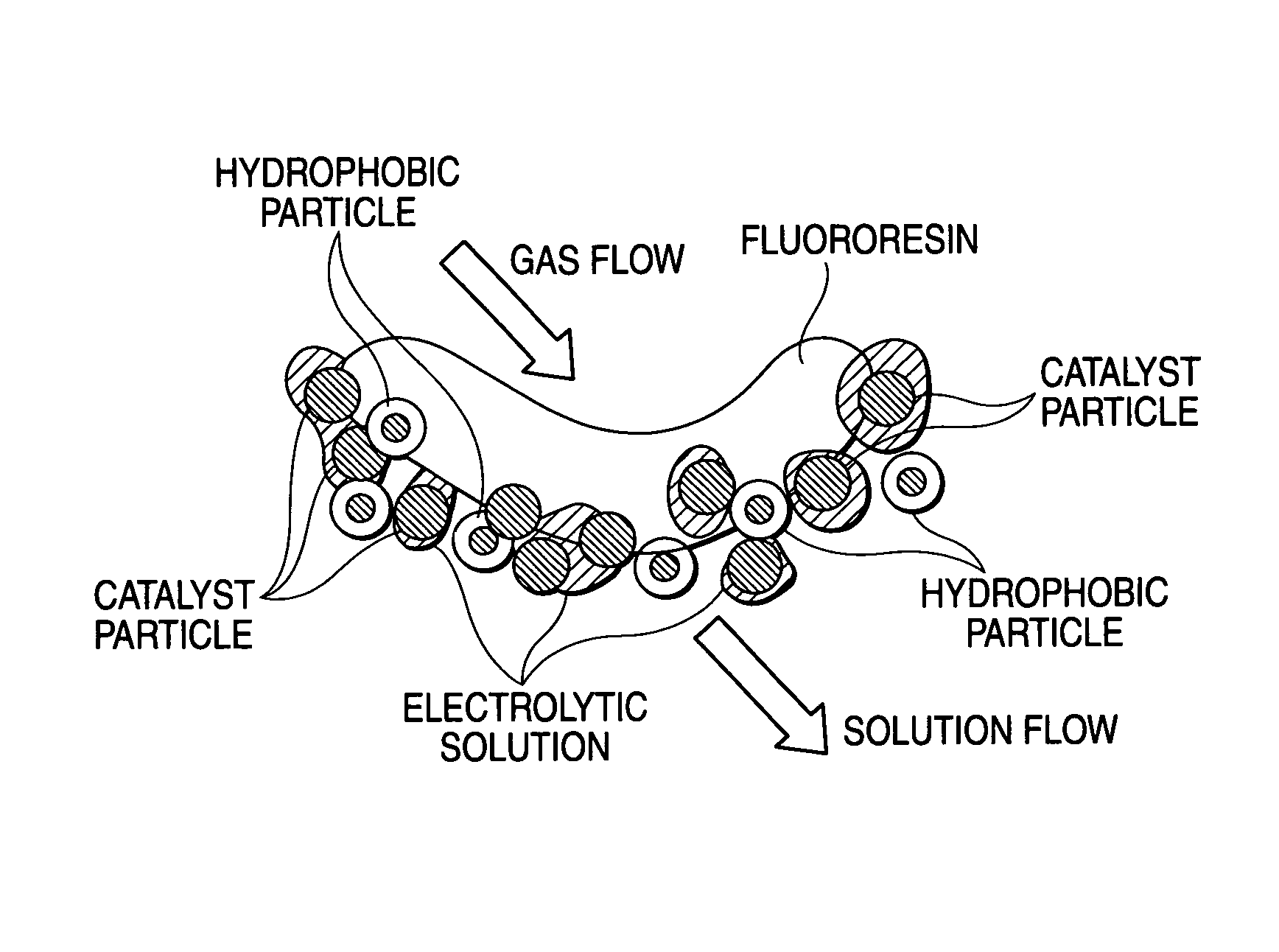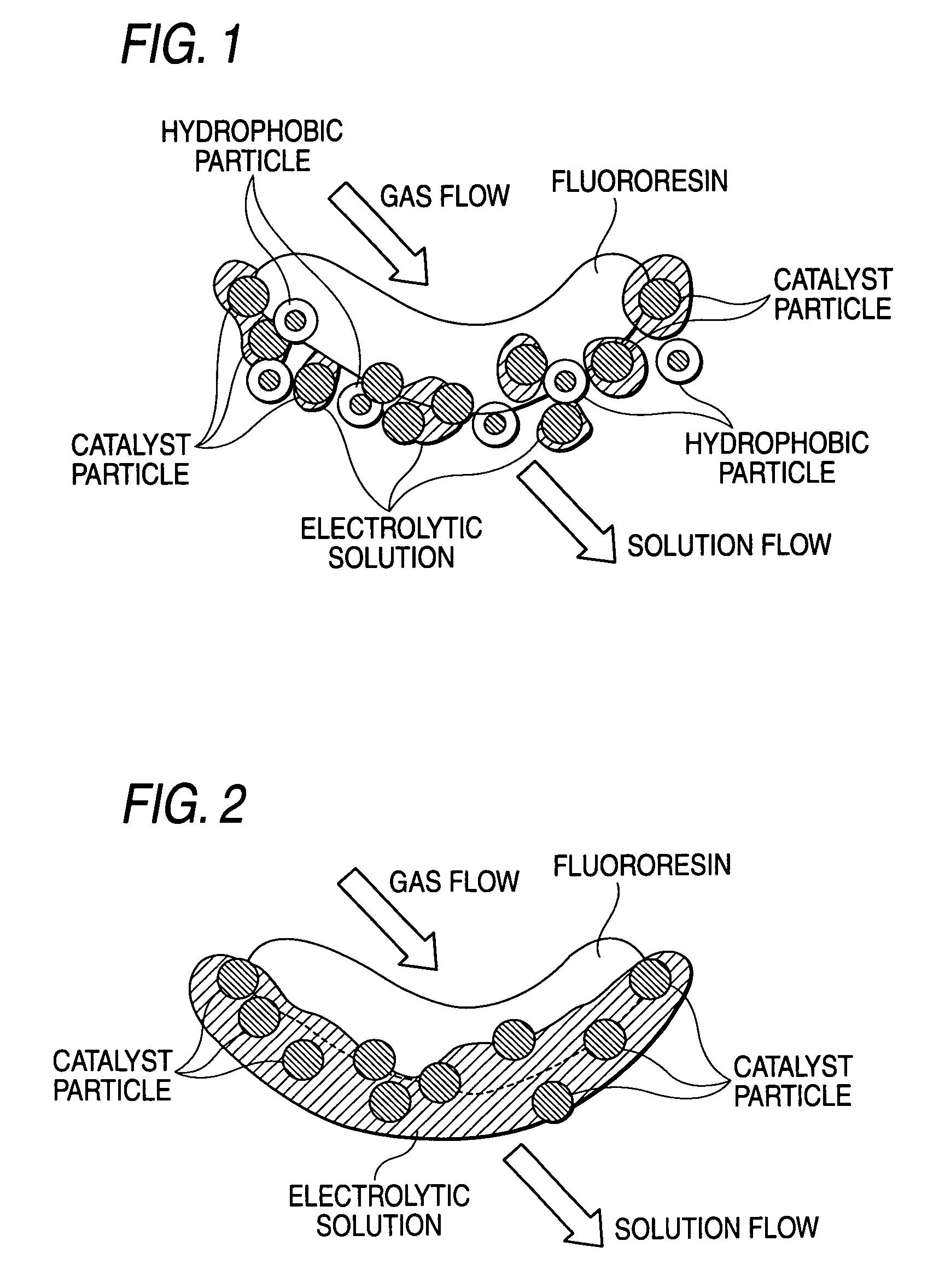Oxygen-reducing gas diffusion cathode and method of sodium chloride electrolysis
a sodium chloride electrolysis and gas diffusion cathode technology, applied in the direction of electrolysis components, electrolysis processes, cell components, etc., can solve the problems of reducing the performance of the electrode, the type of electrolysis method has some problems, and the powder used as the electrode material is easily deteriorated, so as to improve durability, improve the effect of electrode performance and stable over long-term performan
- Summary
- Abstract
- Description
- Claims
- Application Information
AI Technical Summary
Benefits of technology
Problems solved by technology
Method used
Image
Examples
example 1
[0115]Nanodiamond particles (particle diameter, about 4 nm) were placed in a rotatable cylindrical cell. This cell was rotated at 400° C. for 1 hour while passing a mixed gas composed of fluorine gas and nitrogen gas (volume ratio, 9:1) through the cell to thereby conduct fluorination treatment. It was ascertained through XPS analysis that C—F bonds had been formed.
[0116]Silver particles (AgC—H, manufactured by Fukuda Metal Foil Powder Co., Ltd.; particle diameter, 0.1 μm) were evenly mixed with the diamond particles in a molar ratio of 1:0.2. This powder was mixed with an aqueous PTFE suspension (30J, manufactured by Mitsui Fluorochemical Co., Ltd.) in a ratio of 1:1 by volume. The resultant mixture was sufficiently stirred in water containing Triton dissolved therein in an amount of 2% by weight based on the whole of that mixture. The suspension thus obtained was applied to a 0.4 mm-thick carbon cloth substrate in an amount of 500 g per m2 of projected area. This substrate was bur...
example 2
[0119]An electrolytic cell was fabricated in the same manner as in Example 1, except that a particulate mixture obtained by evenly mixing the silver particles with the diamond particles in a molar ratio of 1:0.4 was mixed with the aqueous PTFE suspension so that the proportion of the suspension to the particulate mixture was 1:0.8 by volume, and the resultant mixture was used. This cell was operated in the same manner as in Example 1. As a result, the cell voltage was 2.13 V in the initial stage and after 50-days electrolysis.
example 3
[0120]An electrolytic cell was fabricated in the same manner as in Example 1, except that the diamond particles which had not undergone any fluorination treatment were used. This cell was operated in the same manner as in Example 1. As a result, the initial cell voltage was 2.14 V, and the cell voltage after 50-days electrolysis was 2.15 V
PUM
| Property | Measurement | Unit |
|---|---|---|
| decomposition voltage | aaaaa | aaaaa |
| vol % | aaaaa | aaaaa |
| temperature | aaaaa | aaaaa |
Abstract
Description
Claims
Application Information
 Login to View More
Login to View More - R&D
- Intellectual Property
- Life Sciences
- Materials
- Tech Scout
- Unparalleled Data Quality
- Higher Quality Content
- 60% Fewer Hallucinations
Browse by: Latest US Patents, China's latest patents, Technical Efficacy Thesaurus, Application Domain, Technology Topic, Popular Technical Reports.
© 2025 PatSnap. All rights reserved.Legal|Privacy policy|Modern Slavery Act Transparency Statement|Sitemap|About US| Contact US: help@patsnap.com



